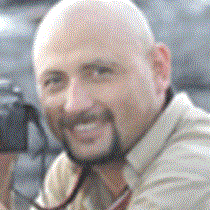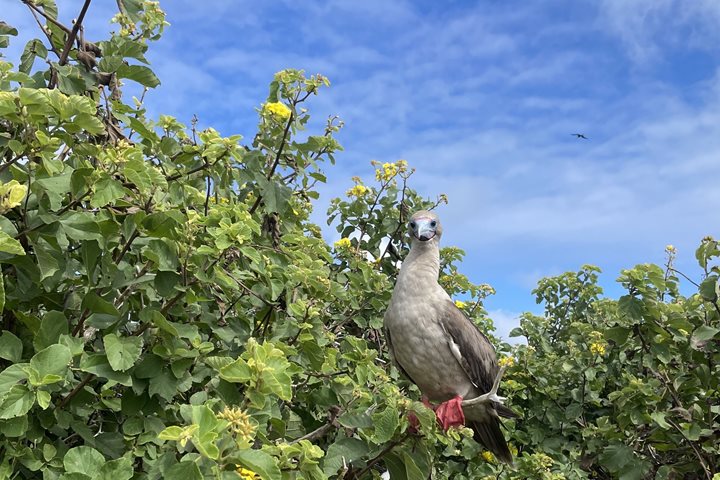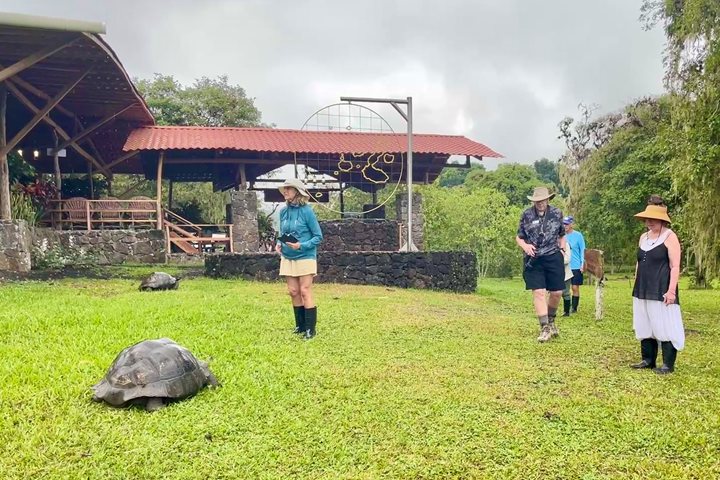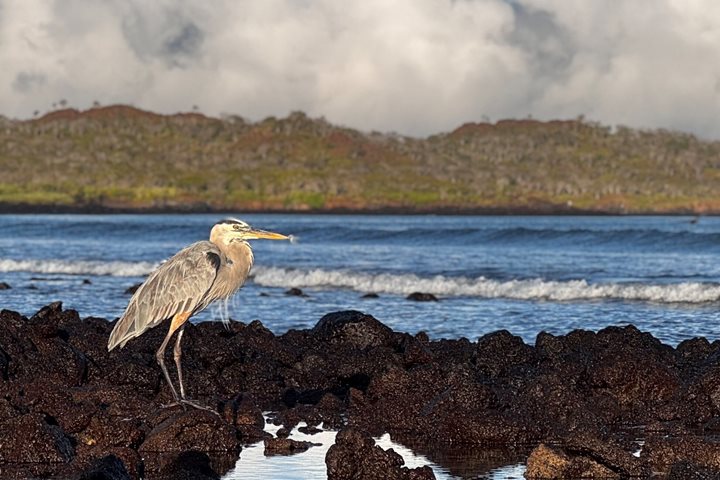Today was our last full day in Galapagos and we explored two visitor sites, one in the morning and one in the afternoon. First we climbed to the top of a parasitic cone; it’s a small volcano which is part of a larger volcano, and there are hundreds of them all over the archipelago. This visitor site was ideal to observe the three species of boobies in Galapagos — blue-footed, Nazca, and red-footed — among other species of seabirds. During our hike we had the opportunity to see two more endemic animal species of Galapagos, the San Cristobal mockingbird and the San Cristobal lava lizard, and many endemic plants as well. For the afternoon we visited a white coralline beach with Galapagos sea lions and turquoise water. What an amazing place to end our expedition in Galapagos.
5/29/2025
Read
National Geographic Gemini
Genovesa Island
Genovesa is considered one of the Galapagos crown jewels, and today it was showing off all of its splendor. Immediately after breakfast we put on our sturdy shoes and set out to explore Prince Philip’s Steps. This area is known for opportunities to observe not only large colonies of nesting Nazca and red-footed boobies, but maybe, just maybe, the short-eared owl which exhibits diurnal behavior on this island. After this walk we got ready for a dip in the Pacific Ocean and snorkeling along the inner coast of this caldera. The afternoon was equally amazing as we disembarked to explore Darwin Bay, along a short and easy trail that was packed with wildlife. Here we observed not only nesting frigatebirds, red-footed boobies, and Nazca boobies, but also a few yellow-crowned night herons. It was another incredible afternoon in the Galapagos Islands.







